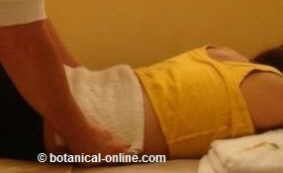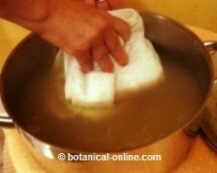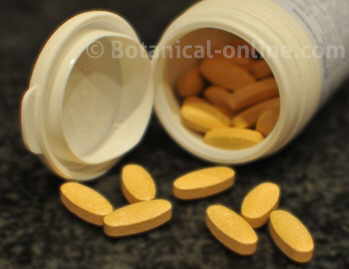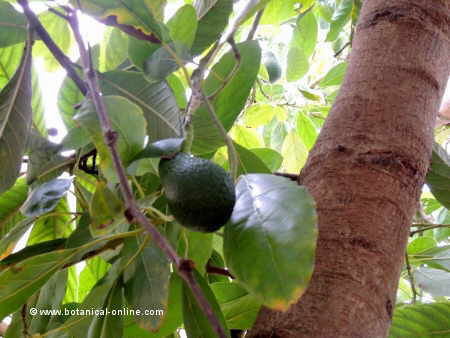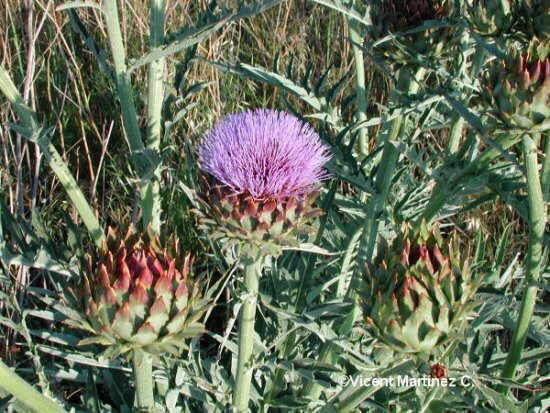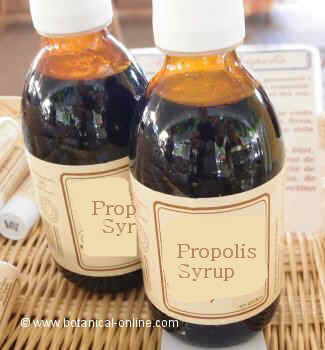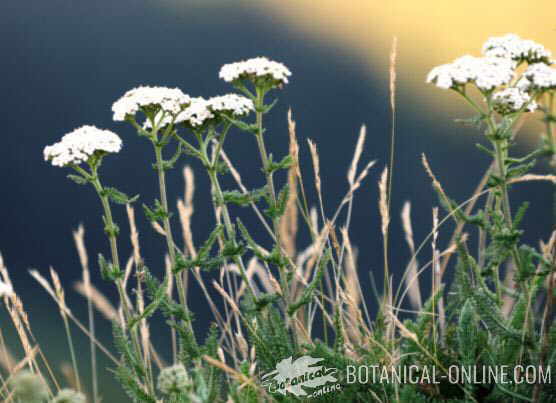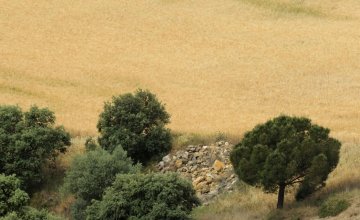External medicinal plants preparations to treat inflammation
How to diminish inflammation using compresses, cataplasms and poultices
You can use some homemade preparations or you can acquire other similar ones in herb shops and pharmacies. They are especially recommended for muscle pain, inflammations (tendinitis, etc.), inflammation of the joints, bumps or rheumatic pains:
Anti-inflammatory compresses
- Violet compresses: (Viola odorata) Violet contains numerous analgesic and anti-inflammatory principles (salicylic acid, methyl salicylate, eugenol, beta-sitosterol, quercetin, rutin, etc.) Its properties to fight pain and reduce inflammation can be very effective in the treatment of pain due to arthritis, osteoarthritis, sore muscles, etc. The root is used. (Decoction of two tablespoons of dried root of crumbled violet per liter of water for 15 minutes) Wet a compress with the resulting liquid and apply on the painful area). See Violet pain pointment.

Compresses of ginger against back pain  Ginger compresses: (Zingiber officinale) Ginger has analgesic and anti-inflammatory properties that help in the treatment of pain. It favors and stimulates the blood circulation of the muscles and calms the pain. Very suitable for rheumatic pain, on aching muscles or for back pain.
Ginger compresses: (Zingiber officinale) Ginger has analgesic and anti-inflammatory properties that help in the treatment of pain. It favors and stimulates the blood circulation of the muscles and calms the pain. Very suitable for rheumatic pain, on aching muscles or for back pain.- How to make a ginger compress: Grate a ginger fresh root and reserve, prepare water and before it comes to boil, squeeze the juice of grated ginger and add the remains to the water. Wet a towel and apply it on the painful area)
Anti-inflammatory cataplasms or poultices
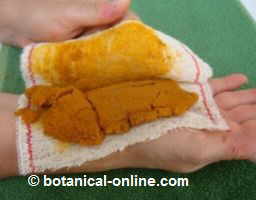
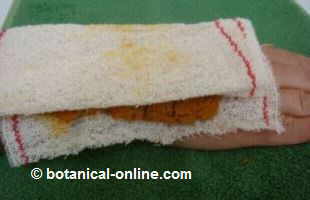
- Turmeric poultice : (Curcuma longa) It is convenient for its anti-inflammatory principles. (Prepare a paste with turmeric powder and hot water, let it cool for 8 minutes and apply the poultice on the skin).
- Mint cataplasm (Mentha piperita): It has been proven that mint oil has analgesic properties very similar to those of salicylic acid. (Cataplasm of leaves soaked in hot water that is applied directly on the painful area).
- Ulmaria or Meadowsweet cataplasm (Filipendula ulmaria): With salicylates, has anti-inflammatory properties for muscle or joint pain. (Cataplasm or compress with leaves and flowers on the inflamed joint area)
- Boldo poultice (Peumus boldus): It contains at least 6 myorelaxing components (relaxing muscle fibers) or antispasmodics, including boldine (alkaloid), cineole and limonene (essential oils). Poultices of boldo leaves can be applied, as it is already evident in the remedies of the ancient Mapuches, on sprains, twists, dislocations or cervical pain.
Homemade creams and ointments for inflammation
- Arnica (Arnica montana): The anti-inflammatory properties of arnica are very useful for the treatment of inflammation of the muscles, swelling or inflammation of the joints. Arnica creams are becoming more common in pharmacies and herb shops. (Apply a gentle scrub on the painful joint with ointment from this plant / Apply arnica cream on the affected area)
- Cayenne pepper (Capsicum frutescens): Creams have recently been developed to apply the analgesic properties of capsaicin in pain-lowering preparations. (Apply cream with capsaicin / The use of home remedies with cayenne pepper can irritate the skin and is not recommended without medical supervision)
- Harpagophytum (Harpagophytum precumbens): Harpagophyte root is used for its anti-inflammatory and analgesic properties in many commercial preparations. Harpagofito cream is purchased in pharmacies or herbalists. (Apply cream on the painful area).
- Calendula (Calendula officinalis): calendula or marigold contains calendulosides and flavonoids, its active ingredients, which deflate, disinfect and promote the healing of tissues. It also contains salicylic acid capable of relieving pain due to its analgesic effect. (Apply creams with calendula or ointments prepared with base oil and calendula essential oil).
Baths to reduce inflammation
- Rosemary: (Rosmarinus officinalis) Rosemary baths are very suitable to relax the muscles that have been subjected to a prolonged effort, mitigating the cramps and pains associated with this effort. (Add 1 liter of liquid from the infusion of a handful of the dried plants per liter of water to the bath water. Perform baths for 15 or 20 minutes).
- Sage (Salvia officinalis): It is an excellent muscle relaxant and natural anti-inflammatory. Very suitable for bumps and bruises. (Rub the sore area with a mixture of 10 drops of essential oil in two tablespoons of olive oil, do not drink the essential oil.) (Add 20 drops to the bath water and take a bath for 15 or 20 minutes) (Add to water of the bath the infusion of 3 spoonfuls of dry plant in a liter of water, and take a bath during 15 or 20 minutes). This last remedy is very useful to combat insomnia, because when we relax, we can better sleep.
Essential oils for inflamed parts of the body
- Lemon tree (Citrus limonum): (Make rubbing with the essential oil in the affected areas / Prepare ointments with base oil (olive oil, shea butter, almonds, jojoba, etc.) and apply on the painful area)
- St. John’s Wort oil (Hypericum perforatum): with analgesic, anti-inflammatory and pain-relieving properties. (Recipe of hypericum oil)
![]() More information on natural anti-inflammatories
More information on natural anti-inflammatories
This article was endorsed by Montserrat Enrich - Journalist specializing in edible wild plants and plant uses.

